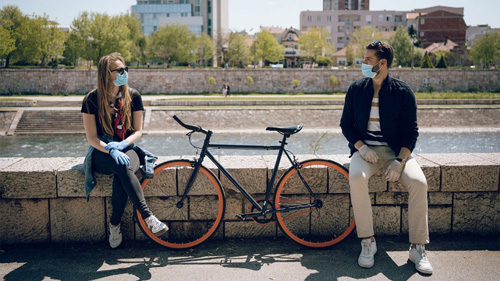Wearing a mask can help prevent the spread of COVID-19 by catching the tiny droplets that are released when we speak, cough, or sneeze.
New research indicates that wearing a mask may also encourage people to physically distance themselves.
Unfortunately, many Americans object to wearing masks.
Experts say it’s important to educate ourselves about the facts.
They also say it’s important to be kind and considerate of the needs of others.
The Centers for Disease Control and Prevention (CDC)Trusted Source says that wearing a mask can help us prevent the spread of COVID-19.
Masks help, according to Dr. Petros Levounis, MA, professor and chair of the department of psychiatry at Rutgers New Jersey Medical School and chief of service at University Hospital in Newark, because they keep the tiny droplets that are released when we speak, cough, or sneeze from escaping.
If the droplets can’t get out of the mask, then the virus contained within them can’t get out either.
However, masks may also provide another benefit beyond containing the virus. A new study indicates they might also make people more likely to physically distance themselves.
Physical distancingTrusted Source, also referred to as “social distancing,” is the best way to prevent the spread of COVID-19.
The CDC recommends that you maintain at least 6 feet (about two arms’ length) between yourself and others.
What the study found
Massimo Marchiori, PhD, professor of computer science at University of Padua in Padua, Italy, decided to take the COVID-19 pandemic as an opportunity to study how people actually behave when it comes to physical distancing.
To measure how people physically distance themselves, he came up with the idea of using a “social distancing belt.”
The belt included a data card, rechargeable battery, and sensors to measure the nearness of other people.
Marchiori and some of his friends wore the belts around their waists as they walked through Venice and surrounding areas.
Altogether, the belts measured more than 12,000 encounters with other people.
When they weren’t wearing a mask, people tended to get quite close — sometimes within a foot away — when they passed by.
When they wore a mask, however, the distance maintained nearly doubled.
Wearing a mask sends a visual reminder to others to maintain distance
Marchiori says he believes that this effect occurred because people are inherently social beings.
Wearing a mask counters this tendency by sending a visual reminder of the risk that exists in closeness.










